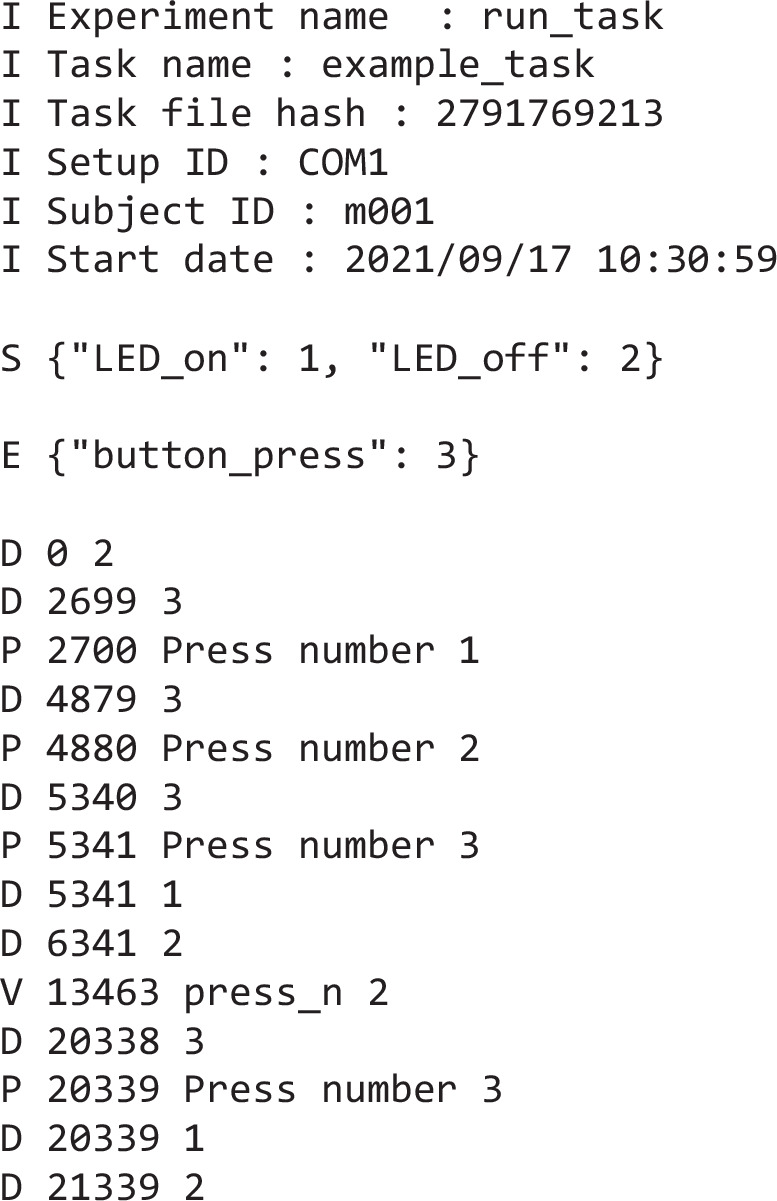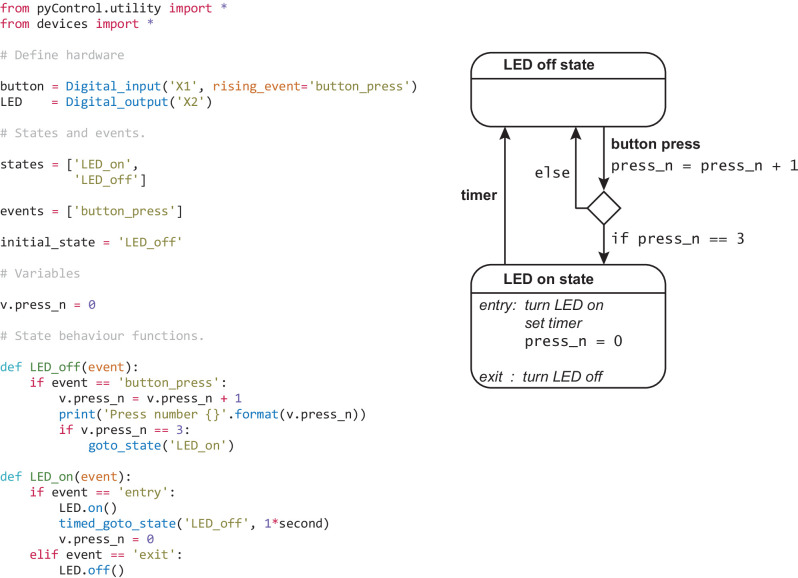Text file generated by running the example task shown in
Figure 1. Lines beginning I contain information about the session including subject, task, and experiment names, start date, and time. The single line beginning S is a JSON object (also a Python dict) containing the state names and corresponding IDs used below in the data file. The single line beginning E is a JSON object containing the event names and corresponding IDs. Lines beginning D are data lines generated while the framework was running, with format D timestamp ID where timestamp is the time in milliseconds since the start of the framework run and ID is a state ID (indicating a state transition) or an event ID (indicating an event occurred). Lines beginning P are the output of print statements with format P timestamp printed output. The line beginning V indicates the value of a task variable that has been set by the user while the task was running, along with a timestamp.


